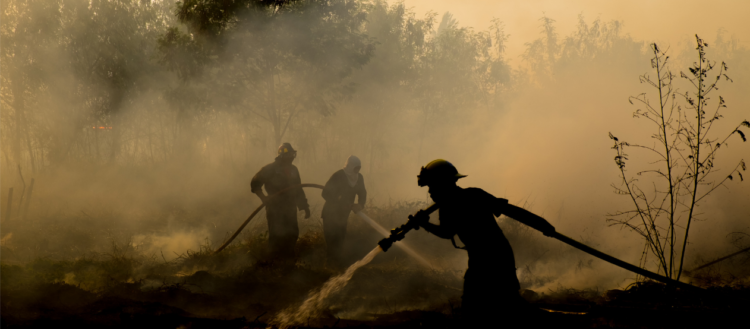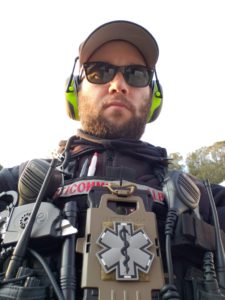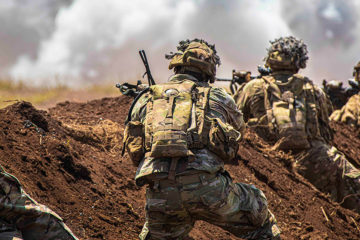When Disaster Strikes Pt. II – How mobile mesh and ATAK serve as force multipliers for first responders

In our last article on The Last Mile, we sat down with Greg Albrecht – medic and goTenna Public Safety Technical Consultant – to discuss the conditions and impacts lack of communications and connectivity have on first responders in natural disaster environments.
This week, Greg returns to discuss the critical importance of situational awareness during emergency response operations, and how mobile mesh networking and ATAK have been force multipliers and gamechangers for first responders.
Here is what he had to say:
TLM: How can mobile mesh meet the comms needs of first responders in disaster scenario environments? Are the comms capabilities of mobile mesh enough for emergency response requirements?
 Greg Albrecht: Today, the communication solutions we use are structured, rigid, and top-down. I’ve got to talk back to the top and come back down. It’s a bureaucratic vent pipe. So compared to that process, mobile mesh is a gamechanger.
Greg Albrecht: Today, the communication solutions we use are structured, rigid, and top-down. I’ve got to talk back to the top and come back down. It’s a bureaucratic vent pipe. So compared to that process, mobile mesh is a gamechanger.
Mobile mesh is a force multiplier because I can communicate, send messages, send locations, and more. These are things I can’t really do on the radio or if I am bandwidth-constrained on the radio. Voice channels on the radio need to be kept open for critical conversations. So, if I’m sending waypoints on a voice channel, imagine me reading off a military grid square. That’s a chunk of conversation that might be used for some other critical messaging.
“Mobile mesh network devices free the operator up to do the thing that they’re there to do and not worry about the technology. It gets the technology out of the way of the mission.” – Greg Albrecht
With mobile mesh, I can also send a text message or other types of communication that can be processed asynchronously. I’m not required to have to give real-time, heads-up voice calls. That’s another constraint if I’m working with radios. If I’m doing something else, I might not be listening to the radio to catch the message.
With a mobile mesh network device, I can access that messaging when I need to, and I can go back to it whenever I need to. I don’t have those capabilities or flexibilities with a radio. If I didn’t read it and write it down from the radio, it didn’t happen.
Another benefit of mobile mesh is that I don’t have to configure it. Neither my IT folks, my radio folks, nor myself have to configure anything. Mobile mesh network devices free the operator up to do the thing that they’re there to do and not worry about the technology. It gets the technology out of the way of the mission by it being “an auto-configuring mesh.” It feels like having a superpower.
TLM: How can it aid with situational awareness? How is what mobile mesh – and applications like ATAK – is delivering superior to the situational awareness solutions and capabilities that first responders employed before?
Greg Albrecht: Our situational awareness solution in the past was an AVL (automatic vehicle locator) for vehicles. For individual units, we simply didn’t have this before. We relied on paper maps and magnets on a board. We would try our best at attempting to translate a finger-point at the screen to someone on the radio. Situational awareness wasn’t a concept responders really thought about before it was something that was part of their job. It never seemed to be a thing that could get better until mobile mesh and ATAK came along.
“Each and every different ATAK element, capability, and feature is a new and different strength that we can flex during an operation, especially when deployed in conjunction with a goTenna device.” – Greg Albrecht
You can also use ATAK on a goTenna network. It’s a standard interface for all situational awareness and geospatial-intelligence. Facets of the job that used to feel desperate and spread out are now on a single interface with a single set of UI elements. And you are practically able to do anything that you need to do in the field, whether that’s tracking individual units, adding markers on a map, overlaying imagery, sending different types of messaging, etc.
I’ve now normalized all of the different ways of getting that information through ATAK. And I can get everyone to train to that interface and can rest assured we are all on the same page throughout a mission or operation.
Each and every different ATAK element, capability, and feature is a new and different strength that we can flex during an operation, especially when deployed in conjunction with a goTenna device.
And it alleviates a lot of heavy lifting on the responders’ parts. It’s auto-configuring, there’s no overhead, and it’s a plug-and-play solution.
TLM: How can mobile mesh integrate with the other technologies being employed in disaster response scenarios – drones, satellite, 5G, etc. – to deliver even more benefits and capabilities to first responders?
Greg Albrecht: I think it’d be foolish to imagine being in any of those scenarios without mobile mesh or – conversely – to use mobile mesh without actually thinking about how we would tie it into any of those technologies.
“By attaching a mobile mesh device like goTenna, I can employ a drone as part of my on-the-ground operational footprint.” – Greg Albrecht
With drones, we’ve now moved beyond just having them for imagery or video. Their flight and payload capacities have increased over the years. As the size of the processing power decreases and the capabilities of the flight hardware increases, our payload capability increases. It’s so invaluable being able to get imagery, ISR, real-time IR, and RF sensing.
By attaching a mobile mesh device like goTenna, I can employ a drone as part of my on-the-ground operational footprint. I’m able to have payload capacity and extend the range of my mesh network because the drone is now serving as a signal relay. Without devices like goTenna, my mobile mesh would be constrained to line-of-sight.
Earth observation satellites have the ability to provide the quickest way to someone on the ground. It’s night and day compared to what we had just ten years ago. I’m the one that’s out there cutting the line, dropping the tree, telling the tanker where to drop, etc. If my constraint is a last mile constraint, then there’s no connectivity for me to effectively make those calls. With mobile mesh, I can make decisions quickly.
Another trend we are seeing with mobile mesh is marrying it to some of these emerging technologies. We’re really pushing the edge by tying in machine learning to a lot of this. I don’t think it needs to be sci-fi anymore.
There’s a lot of decisions that can happen automatically without putting money, time, or lives at risk. And I think by being able to have an emergency response I/O (input output) capability, we can quickly tie that into machine learning, which can assist us in the field. I think once we get this established, it’s going to make us more effective, safer, faster, and better.







No Comment